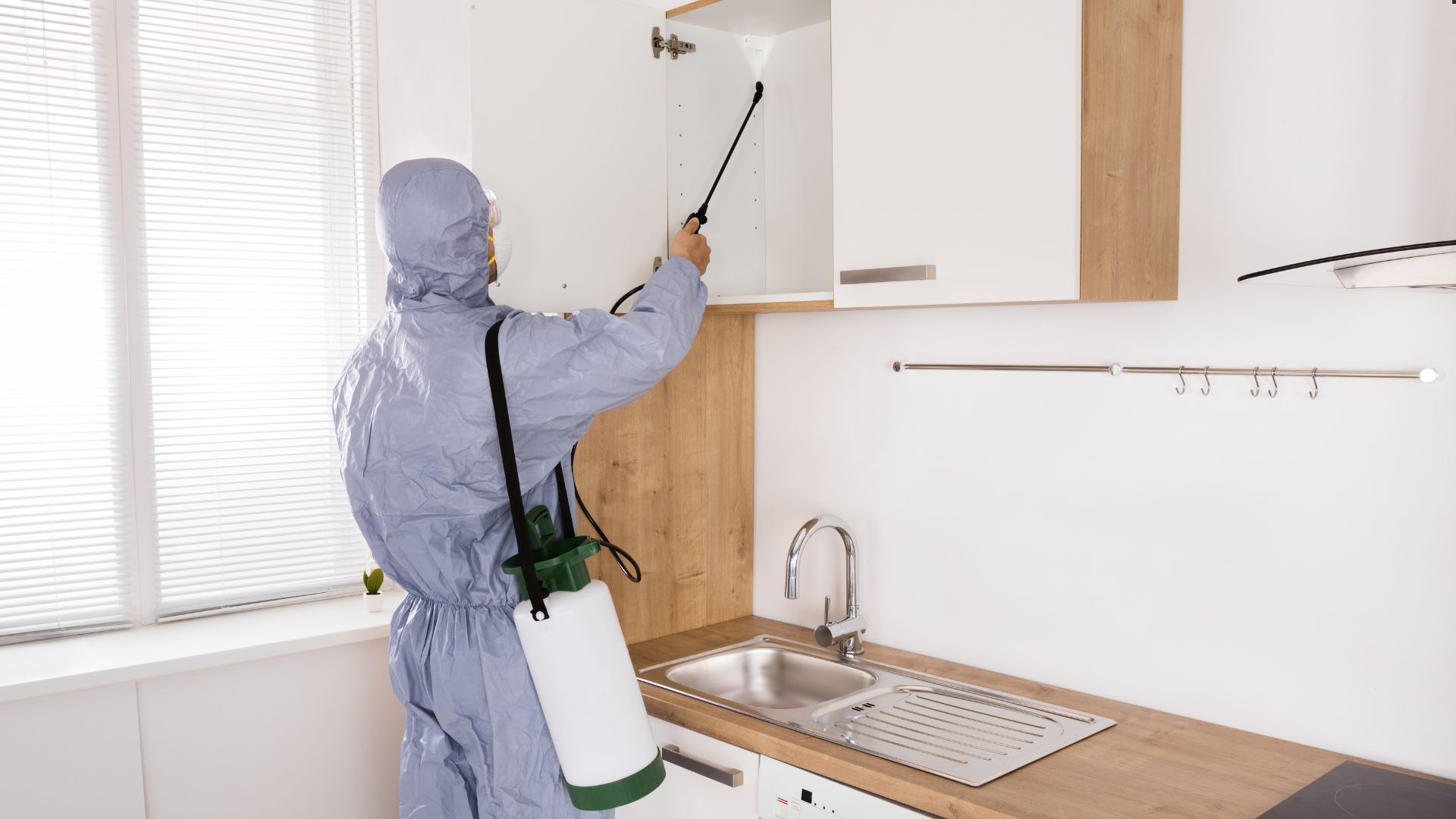Important Factors for Effective Pest Management
Updated on
Published on

The pest management industry has evolved from reactive spraying approaches to sophisticated, data-driven strategies that strike a balance between economic efficiency and environmental stewardship. Professional pest control operations recognize that effective control extends far beyond identifying problems – it requires a systematic understanding of biological systems, economic thresholds, and the integration of technology.
Professional pest control software has become the operational backbone, enabling practitioners to shift from guesswork to precision-based decisions. This technological evolution reflects a broader movement toward integrated approaches that consider every factor influencing pest population dynamics and management outcomes.

Why Don't More Pest Managers Use Economic Thresholds?
Understanding Economic Injury Levels vs. Action Thresholds
Professional pest managers distinguish themselves through mastery of economic threshold concepts. The Economic Injury Level (EIL) represents the pest population density where crop damage costs equal control costs, while the Economic Threshold (ET) serves as the practical trigger point for intervention, typically set below the EIL to provide adequate lead time for treatment implementation.
The foundation of threshold calculations rests on five key variables that determine when intervention becomes economically justified. The cost of management tactics per production unit represents the financial investment required for treatment, while market value per production unit establishes the potential revenue at stake. Injury units per pest quantify the damage potential of individual organisms, and damage per injury unit translates this biological impact into measurable losses. Finally, the proportional reduction in pest attack from treatment measures is the expected efficacy of the chosen intervention method.
Dynamic Threshold Adjustment
Static thresholds fail in real-world applications. Expert practitioners adjust thresholds based on seasonal price fluctuations that directly affect crop values, making the same level of damage more or less economically significant depending on market conditions. Variable control costs, including fuel, labor, and materials, also influence the economic calculation, as higher treatment expenses raise the threshold at which intervention becomes profitable. Population growth patterns specific to each pest species determine the lead time required between threshold detection and effective treatment, while environmental conditions influence both pest pressure development and crop vulnerability to damage.
Research demonstrates that economic thresholds prevent negative financial returns while reducing unnecessary pesticide applications by up to 40%. For soybean aphid management, the established threshold of 250 aphids per plant (with greater than 80% plant infestation and increasing populations) prevents populations from reaching the economic injury threshold of 674 aphids per plant.
Implementation Strategies
A successful threshold application requires systematic field monitoring protocols. Practitioners should establish standardized sampling methods, maintain detailed records of pest densities and crop conditions, and calibrate thresholds to local conditions through multi-season data collection.
How Can You Monitor Pests Before They Become Problems?
Multi-Modal Detection Approaches
Contemporary pest management relies on diverse monitoring technologies that provide complete situational awareness. Physical monitoring tools form the foundation of detection systems, with pheromone traps offering species-specific detection capabilities that can identify pest presence before visual damage occurs. Sticky traps provide quantifiable data on flying pest populations, while pitfall traps capture ground-dwelling species that might otherwise go undetected. Visual plant inspections using standardized sampling protocols remain essential for assessing plant health and damage levels.
Digital monitoring integration enhances traditional methods through smart trap systems that automate data collection and provide real-time alerts when pest populations exceed predetermined levels. Remote sensing technologies enable large-scale assessment of crop health and potential pest pressure across extensive agricultural operations. Weather station integration supports predictive modeling by correlating environmental conditions with historical pest development patterns, while GPS-enabled field mapping creates spatial analysis capabilities that identify pest hotspots and movement patterns.
Predictive Analytics and Forecasting
Advanced practitioners leverage environmental data to predict pest pressure before populations reach damaging levels. Temperature accumulation models track the thermal units required for pest development, enabling accurate predictions of emergence timing and generation progression. Humidity forecasts help anticipate conditions favorable for fungal pathogen development and insect reproduction, while phenological tracking aligns pest development stages with periods of crop vulnerability.
Research indicates that integrated monitoring systems can reduce crop losses by 25-30% compared to reactive approaches. The key lies in establishing monitoring frequencies appropriate to pest biology, weekly assessments during peak activity periods, with increased frequency when approaching economic thresholds.
Data Management and Analysis
Effective monitoring generates substantial data streams requiring systematic management. Professional operations maintain databases tracking pest population trends, environmental conditions, treatment efficacy, and economic outcomes. This historical data becomes invaluable for refining thresholds and improving decision-making accuracy over time.

Can Crop Rotation Replace Chemical Treatments?
Crop Rotation Strategies
Crop rotation remains one of the most powerful pest management tools available. Strategic rotation disrupts pest life cycles by eliminating host plants during critical developmental periods. Effective rotation schemes consider:
Rotation Sequence Design:
- Host plant availability across multiple seasons
- Incorporation of non-host barrier crops
- Strategic use of trap crops to concentrate pest populations
- Cover crop integration for beneficial organism habitat
Biological Mechanisms:
- Spatiotemporal separation of pests from preferred hosts
- Enhanced biodiversity supporting natural enemy populations
- Soil health improvements reduce plant stress and pest susceptibility
- Disruption of overwintering sites and reproductive cycles
Intercropping and Companion Planting
Research demonstrates that intercropping can reduce pest pressure by 20-60% through multiple mechanisms. Aromatic companion plants like basil and mint release volatile compounds that mask host plant odors, making it difficult for pests to locate their preferred food sources. Diverse plantings create habitat complexity that supports beneficial organisms while disrupting pest movement patterns and reproduction cycles.
Successful intercropping requires careful species selection to ensure compatibility between primary and companion crops. Optimal spatial arrangements maximize pest disruption while minimizing resource competition, and synchronized establishment timing ensures that companion plants provide protection during critical crop development periods. The practice works best when companion plants complement rather than compete with primary crops for essential resources like water, nutrients, and sunlight.
Soil Health and Plant Vigor
Healthy plants exhibit greater pest tolerance and recovery capacity than stressed specimens. Cultural practices that promote plant vigor include optimal nutrition management that prevents stress-induced susceptibility to pest attack. Appropriate irrigation timing helps avoid moisture extremes that can weaken plant defenses or create favorable conditions for pest development. Soil amendment programs support beneficial microbial communities that enhance nutrient availability and disease suppression, while pH optimization ensures maximum nutrient availability for plant uptake and utilization.
Is Biological Control Too Risky for Commercial Operations?
Conservation Biological Control
The most sustainable pest management approaches work with existing natural enemy populations rather than against them. Conservation biological control focuses on creating environmental conditions that support beneficial organisms through habitat enhancement strategies. Native plant borders provide alternative hosts and nectar sources that sustain beneficial organisms when primary pests are scarce. Reduced tillage practices preserve beneficial organisms' overwintering sites and minimize soil disruption that can destroy natural enemy populations. Selective pesticide use protects non-target species while maintaining effective control of target pests, and strategic timing of management activities minimizes disruption to beneficial organism life cycles.
Classical and Augmentative Biological Control
Professional practitioners strategically release beneficial organisms to supplement natural populations. Success requires accurate timing, establishment requirements, and environmental compatibility assessment.
Common Beneficial Organisms:
- Parasitic wasps for aphid and caterpillar control
- Predatory mites for spider mite suppression
- Beneficial nematodes for soil-dwelling pest management
- Microbial pesticides for species-specific control
Research shows that well-implemented biological control programs can reduce pesticide use by 50-80% while maintaining equivalent pest suppression. The key lies in creating stable, beneficial organism populations through consistent habitat management.
Monitoring and Evaluation
Biological control requires different success metrics than chemical approaches. Practitioners track the establishment rates of beneficial organisms to ensure that released species are adapting successfully to local conditions. Pest suppression levels over time provide evidence of biological control effectiveness, while system stability indicators help identify potential problems before they compromise control efficacy. This approach emphasizes long-term population management rather than immediate mortality rates, which characterize chemical control evaluations.
Are Mobile Apps Changing How Technicians Work?
Precision Application Technologies
Professional pest management leverages precision technologies to optimize treatment efficacy while minimizing environmental impact. Variable rate application systems adjust chemical inputs based on detailed pest pressure mapping, ensuring that high-pressure zones receive adequate treatment while reducing applications in low-risk locations. GPS-guided equipment provides accurate coverage patterns that eliminate gaps and overlaps, while weather monitoring systems identify optimal application timing conditions that maximize treatment effectiveness and minimize drift potential. Spray drift reduction technologies protect sensitive areas and non-target organisms while ensuring adequate coverage of target zones.
Management Software Systems
Professional pest control operations rely on software platforms that integrate all aspects of business management. Leading systems provide:
Core Management Functions:
- Customer relationship management with detailed service histories
- Route optimization reduces fuel costs and travel time
- Automated scheduling and appointment management
- Digital documentation and compliance tracking
Advanced Analytics:
- Treatment efficacy analysis identifying optimal strategies
- Predictive modeling for pest pressure forecasting
- Economic analysis tools for threshold refinement
- Performance benchmarking across service territories
Research indicates that pest control businesses using integrated management software experience 15-25% improvements in operational efficiency and customer satisfaction scores.
Mobile Technology Integration
Field technicians equipped with mobile applications can access real-time information, update service records immediately, and communicate effectively with office personnel. Mobile platforms enable photo documentation that provides visual evidence of pest problems and treatment results, GPS tracking that ensures accurate service delivery and enables route optimization, and instant access to treatment protocols and safety information that supports consistent service quality.
Which Companies Will Lead the Next Industry Revolution?
The evolution toward data-driven, ecologically conscious pest management represents the maturation of a professional discipline beyond simple trend-following. The five factors outlined here provide the foundation for sustainable, profitable operations that meet client expectations while supporting environmental health.
Success requires commitment to continuous learning, technology adoption, and system refinement. Practitioners who master economic threshold analysis, implement monitoring systems, optimize cultural practices, integrate biological controls, and leverage technology effectively will lead industry advancement.
Successful pest management enterprises achieve exceptional results through proactive systems that prevent problems while building long-term sustainability. By focusing on these five critical factors, pest management operations can achieve unprecedented success levels while contributing to more sustainable agricultural and urban environments.







